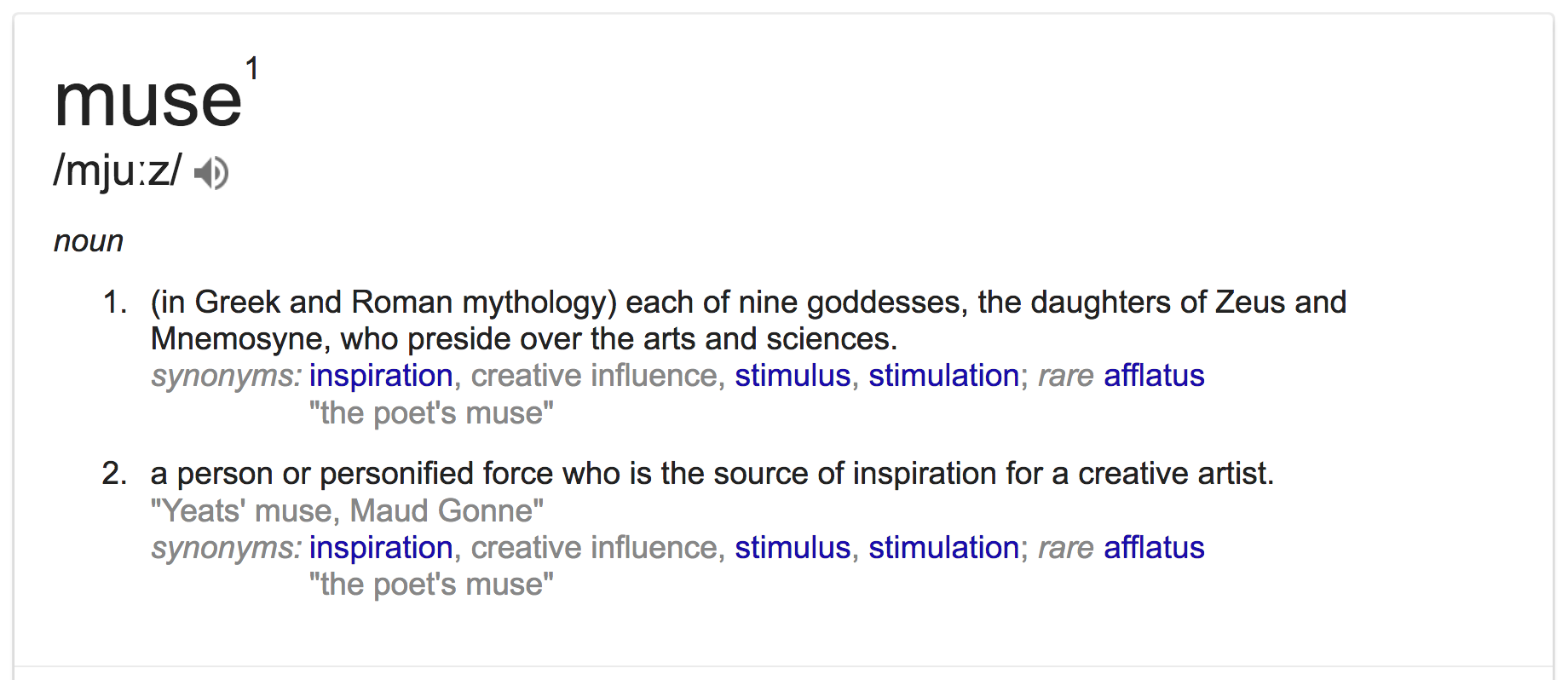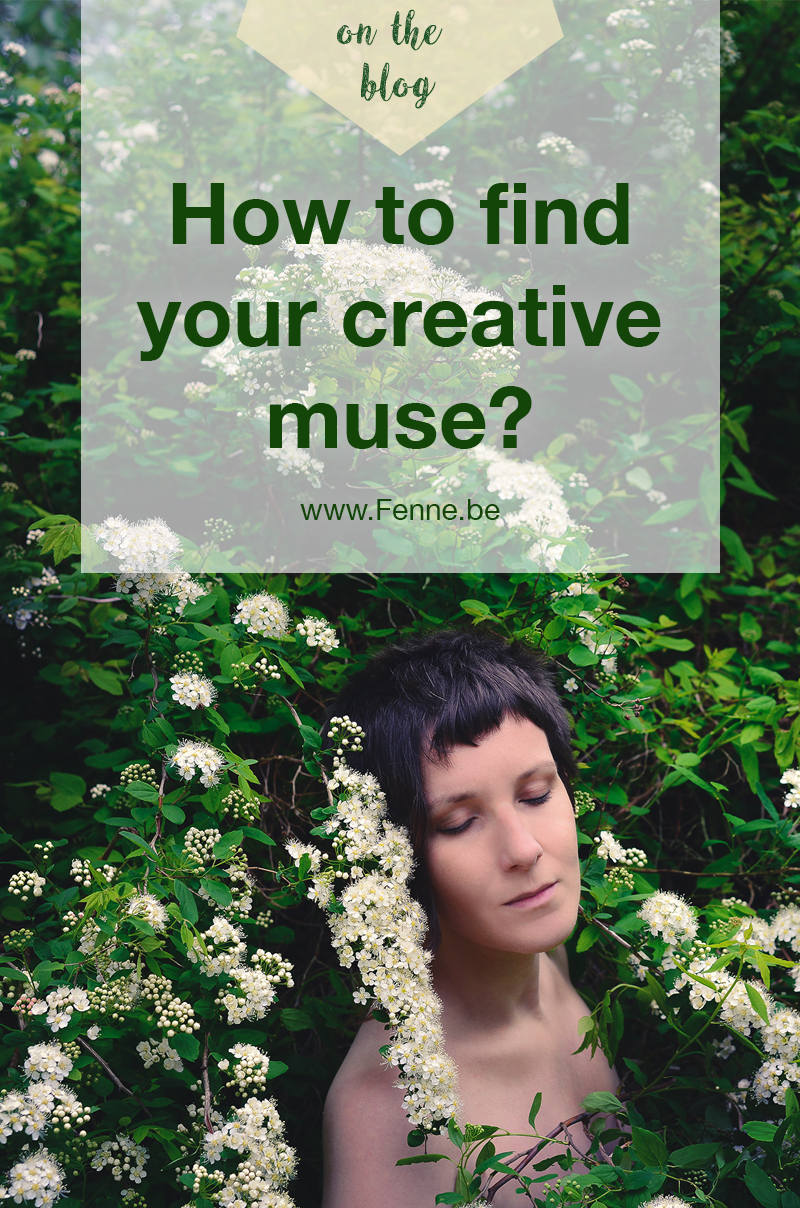How to find your creative muse.
What is it that keeps your inspiration going? What topic can you always write or blog about? Or who inspires your paintings or makes you grab your camera? Or do you want to create something but you don’t know where to start?
A muse is considered a source of never ending inspiration and it often refers to a very special women that magically provides an artist with great new ideas. For some people, finding this muse is like the search for the holy grail. Maybe we take a look at the meaning of the word first:

Nine Muses.
The nine muses were inspirational goddesses of literary arts, music, visual arts and science in ancient Greek mythology and later adopted in Roman culture. These muses are the daughters of Zeus and Mnemosyne and they were brought to life to forget the evils of the world. Each muse is the personification of something that embodies the arts and has her own gift. In paintings you might recognize the muses by the props they are holding. Melpomene for example, the muse of tragedy carries a sword and a tragic mask. Urania who stands for astronomy carries a compass and a globe. Calliope the muse of epic poetry has the writing tablet as her attribute.
Forgetting the evils of the world.
In contemporary usage a muse can refer to anything that inspires an artist but that doesn’t make the search for a muse easier. Whether it is a goddess or a concept, every creating person needs to find the spark that sets the mind on fire. Freud stated that inspiration comes from an unresolved psychological conflict. Others would say it comes from external triggers. But internal or external, either way it’s describes as something beyond our control. It often feels like something that is flowing around in the air like invisible soap bubbles, ready to be caught but exploding just before we can hold them.
Finding your muse(s), the things that make you forget the evils of the world will definitely help you to stay inspired as they will trigger your imagination and creative energy. To define a muse it’s often the easiest to look back in time because that makes it easier to find patterns and (r)evolutions in your work and interests. You can for example keep track of the type of music that attracts you, the type of stories that are able to kidnap you into a different world, the subjects of your photographs and little things in your surroundings that you always notice and that instantly give you a certain feeling or emotion.
If you have the itch of creating but you don’t know where to start, understanding your muses and giving them a special place in your life will gradually shape your vision. In a fast and loud world it might be difficult to hear them therefore it might be a good idea to take your time to look for them by actively listen to music, read books or articles that trigger something, collecting images and take notes of everything that stand out about the noise. it might be a color that makes you happy even on a drizzling Monday morning. Or a type of poetry that makes you see the world differently. Maybe it’s the humor of your grandparents or the energy in the eyes of your children. It can be the beauty that rises after destruction or a sound that resonates with your entire body.
Your muse is something you can always return to, even when you feel lost, don’t know what to create or the opinions of others are louder than your own thoughts. Nobody but you can define your muse. I think there isn’t a person in the world that would make me feel anything but frustration when it comes to numbers. I’m already glad that I can remember my own phone number or code. But perhaps you’re reading this and by me only mentioning numbers you want to start another puzzle, finish a math problem or maybe you go wild over the shape of certain numbers.
I have for example always a few books within reach at my workspace. Even just quickly seeing them keeps the fire burning. And my number one muse will probably be Ziggy, my dog who recently died. After her adoption I started with dog photography and I continued making portraits of her (and many other dogs) for almost 15 years. I was afraid that I would lose interest in dogs as models, that I would run out of ideas to create sets and stories and that I wouldn’t write about my travels with my dogs anymore. And I absolutely had a difficult time, after all I lost my best friend and muse, but although it’s still impossible to write about our very special bond, I found my joy again in photographing dogs.
As you might see on this blog, nature is also a huge inspiration for my artwork but although it’s a struggle sometimes I try to also include and experience the opposite. Spending time in an urban surrounding, with people or even a crowd can shine a light on ideas that were hiding somewhere in the back of my head. Sometimes it’s by noticing how a citylife can be disembodied from time and light by artificial light and sounds that I realize how different darkness and night can be. It’s by being swallowed by sound and movement in big cities that I can slow down even more at my secret hiding spot by the lake. And different opinions of different people often inspire me to think about a subject to turn it into a story. The movement between the extremes seems to create a friction that inspires me to dig into a subject and to create from the questions that arise.
It is then in the process of making, of creating and shaping this voice that I forget the evils of the world.
PS: You might also be interested in these blogposts:
– How to live a creative life
– Be inspired, stay inspired
